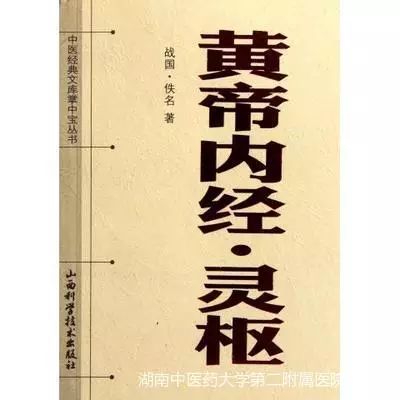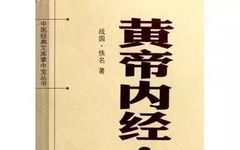
“The relationship between the Lung and Large Intestine” in pediatric applications

The Ling Shu states, “The Lung is connected to the Large Intestine; the Large Intestine is the organ of transmission,” which supports the concept that “the Lung and Large Intestine are interrelated.” This principle is often applied in treating lung diseases with methods that also address the intestines, such as treating lung and intestinal conditions together, and using treatments that address upper issues by targeting lower ones. This approach is widely used in pediatrics!

Relieving constipation and reducing fever
A 7-year-old girl with the surname Zhao presented with a fever lasting 2 days. Symptoms included: fever without sweating, no convulsions, a cough with little phlegm, no wheezing or shortness of breath, dry mouth with a desire for cold water, lack of appetite, halitosis, irritability, and no bowel movement today, with slightly yellow urine. Physical examination revealed: T: 39.1°C, no rashes, red and swollen throat, grade II enlarged tonsils, no purulent secretions or herpes, clear lung sounds without rales, and no abnormalities in heart and abdomen examination. The tongue was red with a yellow coating, and the pulse was floating and rapid. Blood tests were generally normal.
Traditional Chinese Medicine diagnosis: Wind-Heat invading the Lung; Western diagnosis: Acute Upper Respiratory Infection.
Prescription: Yin Qiao San combined with Mulberry Leaf (Sang Ye) and Chrysanthemum (Ju Hua). After 2 doses, fever persisted, no bowel movement, and symptoms remained the same, with the tongue coating becoming thicker and slightly dry. The original formula was supplemented with Da Huang (Rhubarb) 6g, Zhi Shi (Bitter Orange) 10g, Hou Po (Magnolia Bark) 10g, and Xuan Ming Fen (Gypsum) 10g. After 2 doses, bowel movement was achieved, fever reduced, and cough lessened.


Case Analysis: Children are pure Yang bodies, and external pathogens can transform into heat and transmit internally. Additionally, the spleen is often insufficient, leading to food stagnation in the middle burner, and heat accumulation in the Lung and Stomach can ascend and obstruct the throat. Clinically, this often presents as fever, constipation, abdominal fullness and pain, dry mouth, halitosis, and throat redness and swelling. In such cases, using only sweating or clearing methods would be ineffective; treatment should focus on relieving constipation and clearing heat, guiding heat downward, and employing downward methods can yield immediate results.
As stated in the Jing Yue Quan Shu, “If constipation is different, one should add Da Huang (Rhubarb) and Mang Xiao (Mirabilite) to relieve constipation and resolve heat.” When dispersing Lung heat and relieving the exterior, it is necessary to clear turbidity and guide stagnation, open the bowels, and drain heat to effectively resolve heat toxins.

“If Lung heat is removed without addressing the Large Intestine, it can easily lead to the problem of ‘closing the door to kill the thief.’
Dispersing Lung and moistening the intestines to treat constipation
A 6-year-old boy with the surname Li had chronic constipation, often using glycerin suppositories for relief. His stools were dry and pellet-like, with abdominal distension, halitosis, excessive sweating, and fatigue, with a low intake of vegetables and fruits. The tongue was pale red with a thin white coating.
Prescription: Ma Zi Ren Wan combined with Si Jun Zi Tang. After 5 doses, symptoms improved significantly, and after continuing with another 5 doses, symptoms resolved.


Case Analysis: The Lung and Large Intestine share the same Qi; the Lung transforms fluids and moistens the Large Intestine, facilitating smooth bowel movements. The Lung governs Qi, controls respiration, and is responsible for the body’s Qi. When the Lung Qi is deficient in descending, fluids cannot reach the intestines, or if the Lung Qi is weak, it cannot promote movement, leading to difficulty or constipation. Therefore, treating constipation should not only focus on moistening the intestines but also on tonifying Lung Qi to enhance the Large Intestine’s function of transmission.
Draining Lung and opening the bowels, resolving phlegm and alleviating asthma
A 4-year-old girl with the surname Liu had recurrent cough and wheezing for over 2 years, with exacerbation accompanied by fever for 1 day. Symptoms included cough, wheezing, shortness of breath, phlegm rattling in the throat, fever without sweating, and generally dry stools, with bowel movements every 2-3 days, occasionally with pellet-like stools, and yellow urine. Physical examination revealed: T: 38.2°C, clear consciousness, general spirit, red throat, coarse lung sounds, with wheezing and whistling sounds audible. The tongue was red with a thin yellow coating, and the pulse was floating and rapid.
Prescription: Yue Bi Tang with added Da Huang (Rhubarb), Zhi Shi (Bitter Orange), and Zhi Ke (Bitter Orange Peel). After 4 doses, cough and wheezing symptoms reduced; after removing Da Huang and adding Bai Zhu (White Atractylodes) and Dang Shen (Codonopsis), and continuing with 4 doses, cough and wheezing improved.

Case Analysis: The Jing Yue Quan Shu states, “Wheezing has deep roots.” Children often have insufficient Lung and Spleen, with phlegm and fluids retained, which can lead to wheezing when external pathogens provoke the retained phlegm. During asthma attacks, the Lung fails to descend, and the Large Intestine’s transmission function is impaired, leading to dry stools and intestinal blockage. The turbid Yangming Qi can ascend, affecting the Lung’s distribution function, thus worsening asthma. Therefore, treating cough and wheezing must involve the Lung but not be limited to it. According to the theory of the interrelationship between the Lung and Large Intestine, during asthma attacks with phlegm obstruction and Qi reversal, it is necessary to disperse the Lung, stabilize the wheezing, clear phlegm, and open the bowels, guiding the phlegm out through the intestines.

If you find this article helpful, please click the upper right corner to share it with friends or forward it to your circle of friends. Your support and encouragement are our greatest motivation. If you like it, please follow us!

Second Affiliated Hospital of Hunan University of Chinese Medicine, Pediatrics
Address: 233 Cai E North Road, Kaifu District, Changsha City
Phone: 073184917737

